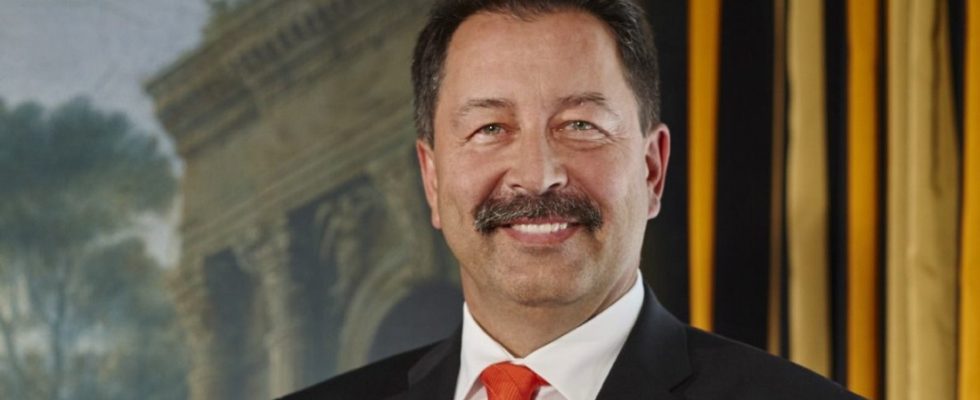Buy
The job sounds like the dream of many people, presumably many shopping freaks: shopping without having to pay for it yourself. That has Sinan Yaman Made for 40 years, for the Hotel Vier Jahreszeiten in Munich’s Maximilianstrasse. In the luxury hotel industry, of course, this does not mean buyers, but director of purchasing. Every handkerchief, every champagne, every treat and even every match was commissioned by Yaman and his team, the hotel writes in a farewell statement. Because the 63-year-old is now retiring and will have to pay for all purchases himself from now on. Shopping in 1991, when the Turk Yaman started, was: calling, talking to the suppliers, sending out letters. On-line? Multiple deliveries daily? Hasn’t existed yet. Two drivers were on duty around the clock to get groceries from the surrounding markets. Of course, Yaman also experienced some nice stories in his time. On December 30, 1992, he ordered fresh lobster for the New Year’s Eve banquet, but couldn’t fly it in because of a snow storm. Nevertheless, Yaman managed to organize 200 lobsters in time. Or the extra requests of an unspecified “British rock band” who would have had a list of extra requests “big as a book”. And an Arab princess once wanted 200 mocha cups from Porzellan-Manufaktur Nymphenburg in the shortest possible time, plus two rickshaws or two oversized grill stations on which several animals could be prepared at the same time. Did Yaman manage then too.
Build
BenjaminDavid.
(Photo: Stephan Rumpf)
Two tons of special sand. So much has to be, so that “the pros” too, like BenjaminDavid von der Urbanauten says they can build their castles and buildings on the culture beach on the Cornelius Bridge this Wednesday, August 9th. Professionals are, for example, architects, architecture students or designers who are given a place and two hours to build something. Families are also invited. In the end, a jury with a structural engineer and the city planning officer Elisabeth Merk determined the best buildings. “People really develop ambition there,” says David, especially the fathers in the family category.
Hear
Whoever crosses the Brooklyn Bridge in New York will probably not be able to get the song “Empire State of Mind” out of their heads for a long time. It is played in a continuous loop for the tourists, who make a video for a lot of money with an influencer ring light as a souvenir and to show off in the social networks. In Paris there is the same business idea, but of course you don’t hear Alicia Keys from the loudspeakers near the Eiffel Tower. One wonders which song would be chosen for Munich if this business also arrived here. Want a soundtrack for the city Ian Jakab in public space and has built a portable system from a solar-powered cargo bike: the DJ bike. He gives a pop-up performance together with the trio av.archive on August 12th. Tatyana Weber (visuals), Markus Rettinger (synthesizer) and Michael Poth (synthesizers) will send sounds through the metal balls at the patent office and play with them. “It’s important that everything is connected. Sound, visuals and environment,” says Poth.
Collect
Gudrun Kadereit.
(Photo: Alessandra Schellnegger)
Filigree leaves, blossoms and grasses, provided with a short Latin text, pressed and glued on sheets: Gudrun Kadereitdirector of the botanical state collection and the botanical garden, and her curator for flowering plants, Andrew Fleischman, are delighted with their latest “historical and scientific treasure”: the “Andechs Herbaria”. They came to light quite by chance during construction work in the Andechs monastery. Attentive members of the Erling-Andechs local history association recognized the value of this find and donated it to the botanical collection. The more recent herbarium contains around 100 pressed plants placed in newspapers which, according to the label, were “collected by P. Ambrosius Böck in Andechs in the summer of 1878”. In the booklet from 1742 – the collector was probably Sylvester de Boricani from Castelfranco in Italy – mainly plants from the Mediterranean region are recorded.
“In Germany, only very few specimens of such old herbaria exist,” enthuses Fleischmann: The oldest of these is the Ratzenberger Herbarium in Kassel’s Ottoneum, which was created between 1556 and 1592. In the herbarium in Göttingen there are three herbaria that are even older. The Munich State Botanical Collection, where the two precious Bavarian plant collections are now kept, is part of the Bavarian State Natural Science Collections. It was founded in 1813 as “Herbarium Regium Monacense” (Royal Munich Herbarium) by King Max I Joseph and the Bavarian Academy of Sciences and contains more than 3.2 million herbarium specimens.
Research
Nadyssa Willanda.
(Photo: Andreas Heddergott/TUM)
Singapore wants to produce a third of the food it needs itself by 2030. A big goal, because there is hardly any farmland in the small island and city state, in which 5.7 million people live in an area slightly larger than the district of Munich. Research is therefore being carried out on algae at TUM that could make this plan a reality. Along with soy, the underwater plants are one of the most important sources for alternative protein products. But they should also taste good. Namely after chicken. working on it Nadyssa Willanda: “Only if you know how taste develops at the molecular level can you influence it in a targeted manner,” she says.

